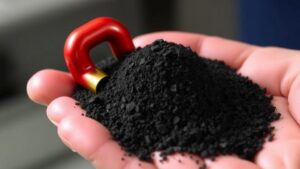Using Temperature Changes in Streams to Identify Natural Gold Deposits
Using Temperature Changes in Streams to Identify Natural Gold Deposits
Identifying gold deposits in natural streams and rivers is a significant endeavor in geology and mineral exploration. One innovative method that has emerged is utilizing temperature variations in these waterways. This article delves into how temperature changes can serve as indicators of gold and other mineral deposits, exploring the mechanisms behind this phenomenon, associated methodologies, and practical applications of the findings.
Understanding the Basics of Gold Deposits
Gold is often found in rivers and streams due to natural erosion and transport processes. As weathering and erosion act upon rocks containing gold, the metal can be liberated and carried downstream. Understanding the conditions leading to the concentration of these minerals is essential for effective prospecting.
Temperature and Gold Deposits: The Connection
The relationship between temperature and the presence of gold deposits is based on physical and chemical processes that occur in stream environments. Regions with mineral deposits may show distinct thermal patterns due to several factors:
- Thermal Conductivity: Gold and other minerals vary in thermal conductivity. Streams draining mineral-rich areas can exhibit temperature anomalies as the water interacts differently with the substrate.
- Heat Generation: Mineralization can lead to heat generation due to chemical processes occurring during the interaction of water and substrate materials.
When water passes through sediment with gold, it can either lose or gain heat based on the local geology. The temperature can indicate the presence of gold-bearing materials, especially when environmental factors such as seasonal changes or precipitation alter flow conditions.
Methodology: Monitoring Stream Temperature
To utilize temperature as an exploratory tool for gold deposits, several methodologies can be employed:
- Site Selection: Researchers focus on ancient riverbeds, alluvial deposits, and other geological formations known for gold occurrence.
- Temperature Measurement: Using high-precision temperature sensors and data loggers, researchers continuously monitor temperature changes at various points in the stream during different times of the year.
- Identifying Anomalies: Data is analyzed for temperature anomalies that correlate with known mineral deposits.
For example, a case study in the Sierra Nevada foothills utilized this method by comparing temperature data from several stream locations associated with previously documented gold resources. The study found that sites with heightened anomalous temperatures often correlated with elevated gold concentrations in sediment samples.
Real-World Applications
Using temperature differences has practical implications for mining companies and prospectors. Here are several ways this approach can be translated into real-world practices:
- Cost Reduction: Instead of extensive drilling or excavation, temperature monitoring offers a less invasive and more cost-effective exploration technique.
- Environmental Considerations: This method minimizes damage to the ecosystems typically impacted during traditional mining activities, aligning with sustainable mining practices.
Challenges and Considerations
While promising, utilizing temperature changes does come with its challenges:
- Environmental Variability: External factors such as seasonal weather changes can significantly influence temperature readings, making it essential to collect and analyze data over extended periods.
- Technical Limitations: Accurate and consistent temperature monitoring requires advanced technology and expertise, which may not always be readily available.
Plus, this approach should ideally be used in conjunction with other geological and geochemical assessments to reinforce findings and improve accuracy.
Conclusion
In summary, the identification of natural gold deposits through temperature changes in streams offers an innovative and effective method for mineral exploration. By understanding the relationship between temperature variations and geological processes, researchers and prospectors can uncover valuable insights into gold distribution. Continuous advancements in monitoring technology and analytical methods will undoubtedly enhance the efficacy of this approach. For those engaged in the search for natural resources, embracing such innovative methods can lead to significant discoveries while adhering to responsible environmental practices.
Actionable Takeaways:
- Prospecting teams should consider integrating temperature monitoring into their exploration toolkit.
- Collaboration with geological experts can enrich exploration strategies and enhance data interpretation.
- Continuous learning and adaptation to new technology will be crucial for maintaining competitiveness in the field.

